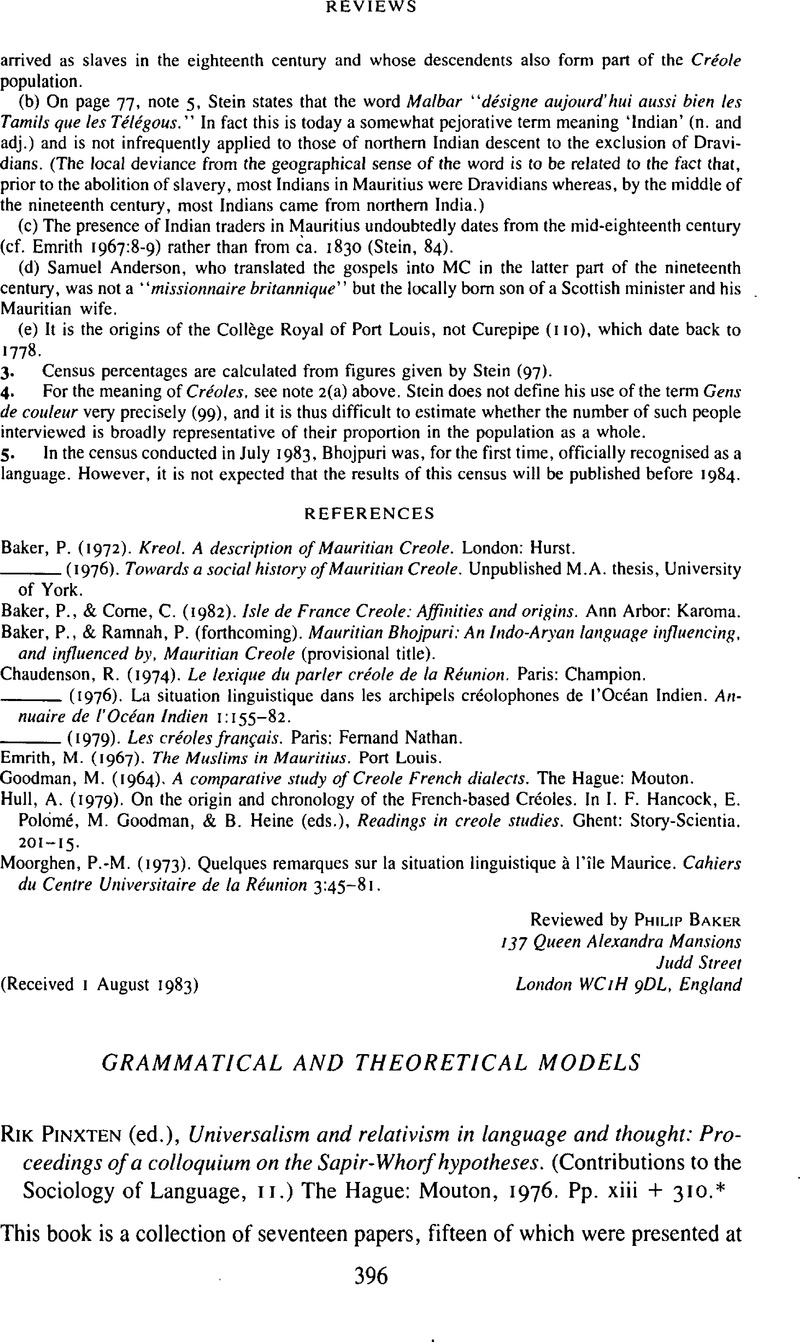No CrossRef data available.
Article contents
Grammatical and Theoretical Models - Rik Pinxten (ed.), Universalism and relativism in language and thought: Proceedings of a colloquium on the Sapir-Whorf hypotheses. (Contributions to the Sociology of Language, II.) The Hague: Mouton, 1976. Pp. xiii + 310.*
Published online by Cambridge University Press: 18 December 2008
Abstract
An abstract is not available for this content so a preview has been provided. Please use the Get access link above for information on how to access this content.

- Type
- Book Review
- Information
- Copyright
- Copyright © Cambridge University Press 1984
References
REFERENCES
Kuhn, T. S., (1970). The Structure of scientific revolutions. Chicago: University of Chicago Press.Google Scholar
Longacre, R. E., (1956). Review of Language and reality: The philosophy of language and the principles of symbolism by Urban, W. M., and Four articles on metalinguistics by Whorf, B. L.. Language 32:298–308.Google Scholar
Longacre, R. E., (1973). Introductory remarks. In Hoenigswald, H. M., & Longacre, R. E. (eds.), Diachronic, areal, and typological linguistics (Current Trends in Linguistics. 11.) The Hague: Mouton. 287–93.CrossRefGoogle Scholar
Paredes, J. A., & Hepburn, M. J., (1976). The split brain and the culture-and-cognition paradox. Current Anthropology 17: 121–27.CrossRefGoogle Scholar
Pinxten, R., van Dooren, I., & Harvey, F. (1983). Anthropology of space. Philadelphia: University of Pennsylvania Press.CrossRefGoogle Scholar
Smith, N., & Wilson, D. (1979). Modern linguistics: The results of Chomsky's revolution. New York: Penguin.Google Scholar
Whorf, B. L. (1956). Language, thought, and reality. Carroll, J. B., ed. Cambridge, Mass.: MIT.Google Scholar


